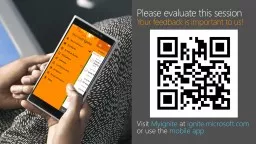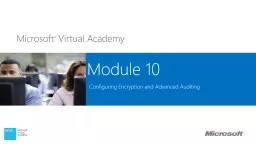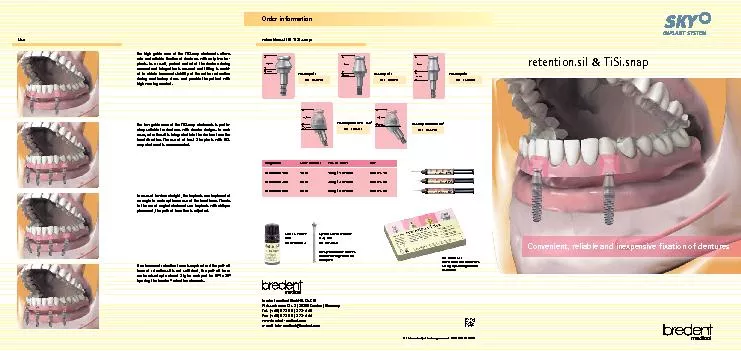PPT-BitLocker Deployment Using MBAM is a Snap!
Author : celsa-spraggs | Published Date : 2016-11-15
Lance Crandall Program Manager Microsoft BRK2331 Threats to your data are everywhere Protect data is shared SHARING PROTECTION DEVICE PROTECTION Protect data when
Presentation Embed Code
Download Presentation
Download Presentation The PPT/PDF document "BitLocker Deployment Using MBAM is a Sna..." is the property of its rightful owner. Permission is granted to download and print the materials on this website for personal, non-commercial use only, and to display it on your personal computer provided you do not modify the materials and that you retain all copyright notices contained in the materials. By downloading content from our website, you accept the terms of this agreement.
BitLocker Deployment Using MBAM is a Snap!: Transcript
Download Rules Of Document
"BitLocker Deployment Using MBAM is a Snap!"The content belongs to its owner. You may download and print it for personal use, without modification, and keep all copyright notices. By downloading, you agree to these terms.
Related Documents














